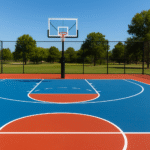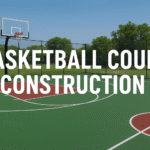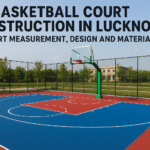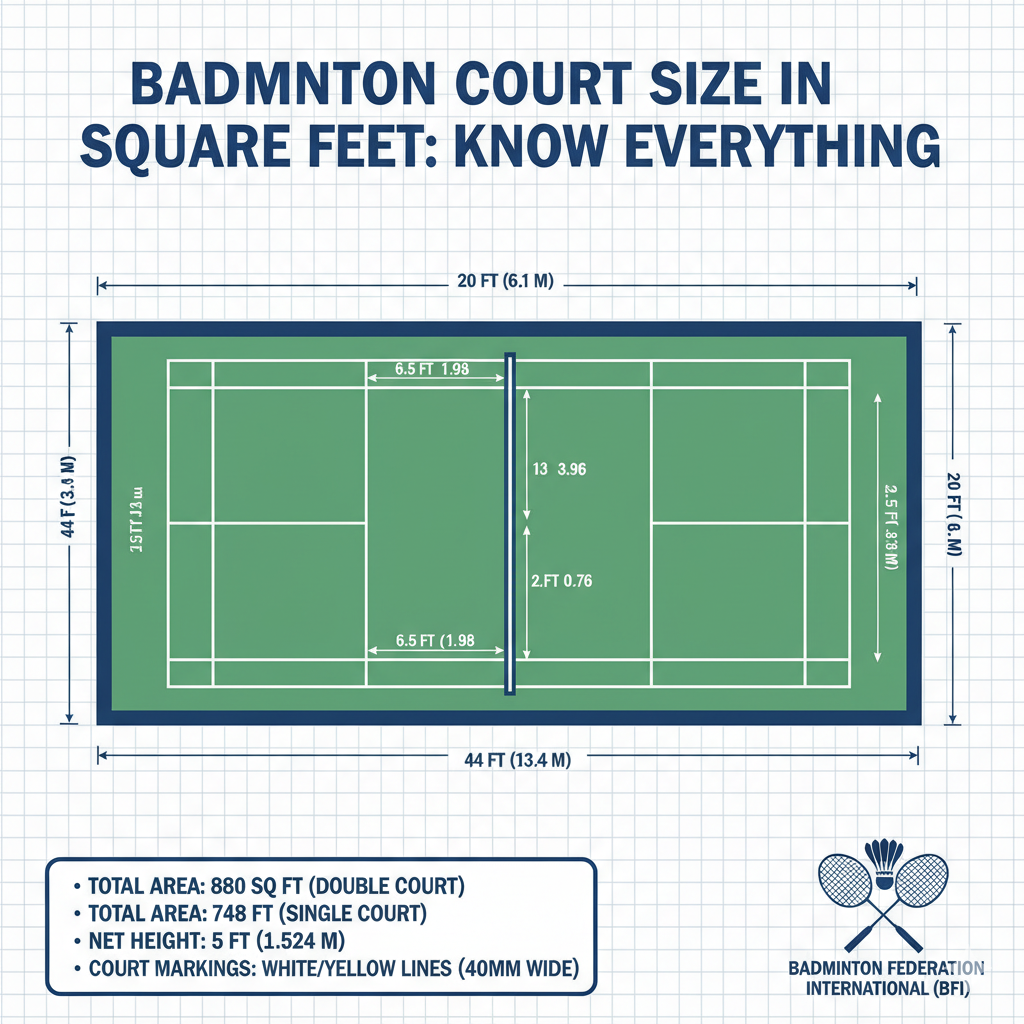Introduction
Badminton is one of the fastest-growing sports globally, known for its speed, agility, and thrilling rallies. But behind every exciting game is a carefully measured court that ensures fairness and consistency. The Badminton World Federation (BWF) defines the official court dimensions, which apply worldwide for tournaments and training.
One of the most common questions asked is:
“What is the size of a badminton court in square feet?”
This guide breaks down the exact badminton court size in square feet, including singles, doubles, service courts, and buffer zones—so you know everything about space requirements for both play and construction.
Official Badminton Court Dimensions
According to BWF standards, the badminton court is a rectangle that measures:
-
Length: 44 feet (13.40 meters)
-
Width: 20 feet (6.10 meters)
Total Court Area
44×20=880 sq ft44 \times 20 = 880 \, \text{sq ft}44×20=880sq ft
✅ The official badminton court size is 880 square feet.
This is the same for both singles and doubles matches, but the markings inside the court differ.
Singles Court Size
In singles play, the width is slightly narrower than doubles:
-
Length: 44 feet
-
Width: 17 feet
44×17=748 sq ft (approx.)44 \times 17 = 748 \, \text{sq ft (approx.)}44×17=748sq ft (approx.)
✅ The singles court size is about 748 sq ft.
Doubles Court Size
In doubles play, the full width is used:
-
Length: 44 feet
-
Width: 20 feet
44×20=880 sq ft44 \times 20 = 880 \, \text{sq ft}44×20=880sq ft
✅ The doubles court size is 880 sq ft, which is the standard full-court size.
Half Court Size (One Side of Net)
Since the net divides the court equally, each side measures:
-
Length: 22 feet
-
Width: 20 feet
22×20=440 sq ft22 \times 20 = 440 \, \text{sq ft}22×20=440sq ft
✅ A half court is 440 sq ft.
This is useful for training drills or recreational play.
Service Court Size
Each half of the court is further divided into two service boxes by a center line and a short service line.
-
Length: 15.5 feet
-
Width: 8.5 feet
15.5×8.5=132 sq ft15.5 \times 8.5 = 132 \, \text{sq ft}15.5×8.5=132sq ft
✅ A service court measures 132 sq ft.
Since there are four service courts in total (two on each side), they cover 528 sq ft of the total area.
Space Requirement with Buffer Zone
In practice, the official 880 sq ft court area is not enough for play. Extra clearance is required around the court for safe movement and dives.
-
Side clearance: 6.5 feet (2 meters) each side → +13 ft
-
Back clearance: 6.5 feet (2 meters) each end → +13 ft
Total Playable Space
-
Effective length = 44 + 13 = 57 ft
-
Effective width = 20 + 13 = 33 ft
57×33=1,881 sq ft57 \times 33 = 1,881 \, \text{sq ft}57×33=1,881sq ft
✅ A badminton court with buffer zones requires about 1,880 sq ft of space.
This is the minimum hall size for a single court setup.
Ceiling Height Requirement
Besides floor area, ceiling height is also critical:
-
Minimum ceiling height = 30 ft (9 meters)
This ensures high clears and lobs don’t hit the ceiling during play.
Quick Reference Table
| Court Type | Dimensions (ft) | Area (sq ft) |
|---|---|---|
| Singles Court | 44 × 17 | 748 |
| Doubles Court | 44 × 20 | 880 |
| Half Court (one side) | 22 × 20 | 440 |
| Service Court | 15.5 × 8.5 | 132 |
| Court with Buffer Zone | 57 × 33 | 1,881 |
Comparison with Other Courts
To understand how compact a badminton court is, let’s compare it with other sports courts:
-
Tennis Court: 2,808 sq ft (singles) – much larger than badminton
-
Volleyball Court: 1,741 sq ft – about double a badminton court
-
Basketball Court: 4,700+ sq ft (NBA standard) – nearly 5 times bigger
✅ Badminton courts are among the most space-efficient indoor sports facilities.
Importance of Accurate Court Size
Maintaining correct court dimensions is important because:
-
Fair Play – Players worldwide compete on equal-sized courts.
-
Training Consistency – Athletes can practice anywhere without adjustment.
-
Safety – Buffer zones reduce collision risks.
-
Tournament Readiness – Courts must meet BWF standards for official matches.
-
Cost Planning – Flooring, lighting, and construction costs depend on accurate space measurement.
Common Mistakes in Court Measurement
Many local or recreational facilities make errors that affect play quality:
-
Not leaving proper buffer space around the court.
-
Incorrect service line placement.
-
Wrong line thickness (must be 40 mm wide).
-
Ceiling height too low for high shots.
Avoiding these mistakes ensures a professional and safe playing environment.
Conclusion
The standard badminton court size is 880 sq ft (44 ft × 20 ft). For singles matches, the court area reduces to about 748 sq ft, while each half court is 440 sq ft. The service court is 132 sq ft, and with proper buffer zones, a full badminton setup requires nearly 1,880 sq ft of space.
Knowing these measurements is vital for players, coaches, architects, and sports facility planners. Whether building a new court or simply learning about the game, understanding the badminton court size in square feet helps you appreciate the precision and global standardization that makes this sport truly international.https://www.sports-facility.in/index.php




